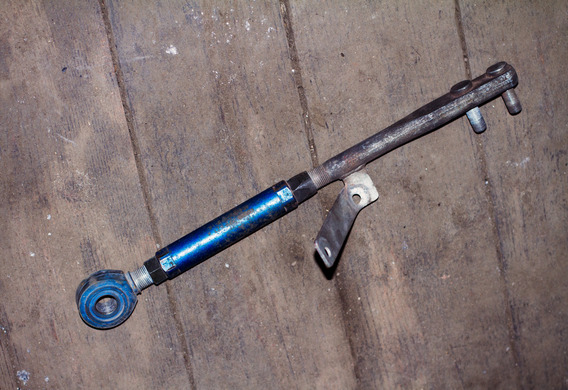
The active thrust is the element of the vehicle suspension, depending on the place of installation, to restrict the movement of the front fist or the rear axle. History of jet propulsion
History of jet propulsion
As the maximum speed of the vehicles increased, the developers even before the Second World War were faced with the fact that the primitive dependent suspension, in which the elastic element-springs-serves at the same time as the stabilizer, fails to cope with the proper grip of the wheels with the road. In addition, other factors influencing the driveability of the car-the urge to rocking the body, the creals and the like-were manifested during the high speed movement. They are influenced by the effect on the wheel, and through the wheel, when the movement of the vehicle is affected by forces operating in different directions. And if, in the case of a slow movement, without swimsuit and at a low speed, their impact is impercepvibly, or it does not cause negative sensations, it becomes frankly unsafe in a fast drive. In other words, producers had to engage in serious scientific research to figure out how to deal with the forces that lead to the rollover of the car. To successfully fight these factors, the levers became the backbone of the independent suspension and then other elements to help ensure the stability of the body, including jet propulsion.
List of jet vessels
Classify rods depending on the place of installation, the work they do, and the suspension type.
Front longitudinal reactive parts are the element of the front independent suspension.
The main element of the independent suspension is the transverse levers, the upper and the lower. The configuration may be different, but there is one common characteristic-the transverse levers limit the movement of the front wheel only in the transverse direction. In other words, when the vehicle is moving, the levers allow the carrier wheel to rise and fall relative to the body in response to the roughness of the road, but does not allow the wheel to tilt.
However, there are other forces, and some in the longitudinal direction, for example, during acceleration or braking. With these loads, the transverse levers cannot cope. In order to hold the wheel on the spot in the longitudinal direction, the jet propulsion invented. Typically, the forward jet rod is one end attached to the main transverse lever (usually the lower one) and the other end to the bodywork, ensuring longitudinal stability.
However, the draught is designed to allow the lever to be easily moved up and down. They are firmly attached to the lever, in two points, and to the body by means of bolts with the bolts attached to the levers. This design provides for traction with reduced mobility.
Rear-jet propulsion
The rear longitudinal jet traction is used in the design of the independent multi-board suspension and, in general, is identical with the design of the forward thrust. The rear transversal jet rod shall be used to keep the main element of the rear suspension from vibration in the transverse direction of the bridge.
Longitudal swings hold the longitudinal jet thrust forward, the design of which is different from those used in the multi-board suspension only in that both ends are attached to the anchorages through the site blocks, one end to the bridge, the others to the bodywork.
In general, the transverse thrust of the jet is long. This is because the movement of the bridge up and down can be quite large and limited only by the length of the shock absorbers. In order to achieve significant mobility, the transverse traction is long in accordance with the physical principle of the lever: even when the bridge is moved over the whole length of the shock absorber of the sai-blocks in the tyres is almost irradiating.
Peculiarities of jet propulsion
Characterical features of jet propulsion are a direct consequence of their construction and appointment. These elements are under constant pressure, and in different directions. The main direction is either transverse or longitudinal, but, as part of the general design of the suspension, the jet thrust works often and curling under the influence of forces operating in other directions.
They are elastic steel, capable of withstanding a high load over a long period of time comparable and sometimes exceeding the lifetime of the car. However, the propints, part of the thrust design, are not a natural extension of the rod (do not do with them with a single difference), and be attached to the rod by welding. Welds have a limited service life and over time (or under the influence of caps) are destroyed. It is necessary to regularly monitor and change the traction in the event of cracks.
The weakest element of thrust is the site blocks. Without them, they are not allowed for the reasons described above, so they should be closely monitored. Under the influence of repeated loads they are gradually covered by cracks and then the rubber part is split and the thrust begins to move freely relative to the base to which it is attached. It is recommended to change the traction during the rupture stage without waiting for a break.
The heavy metal is located under the bottom of the car, where the metal is most vulnerable to weather conditions, so corrosion necessarily covers them even if protective coating is available. If the draught is not dangerous, it is not dangerous; it is necessary to keep track of the rod-welded thrust of the pipes.
Unstandard Jet Propulsion
For a number of models, mainly sports cars and SUVs (also used for sports), third parties offer "tuniper" traction. Typically, they differ from the standard themes, which are divided into two parts, allowing you to adjust their length. This is necessary in order to reduce or increase the clearance, depending on the type of sport for which the car is being prepared.







